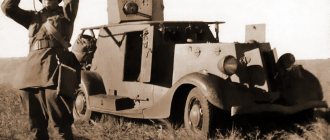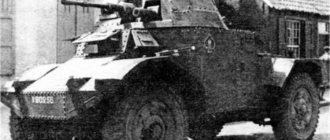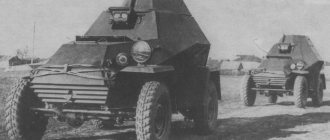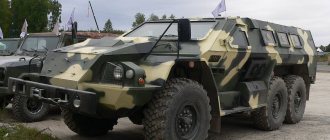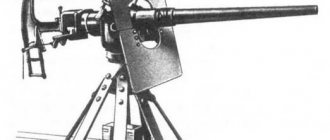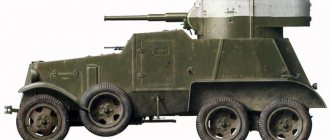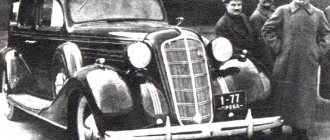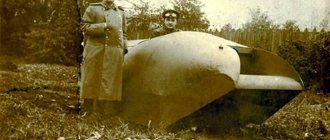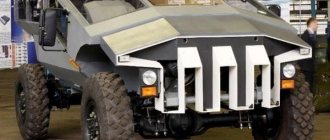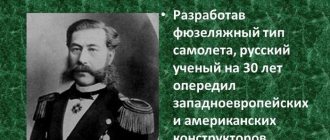“Russian Austin” \ “Austin-Putilovets” Armored car
By 1916, it became obvious that it would not be possible to fully equip the Russian army with armored vehicles through supplies from abroad alone. To avoid dependence on foreign suppliers in Russia, several projects of domestic armored vehicles were developed by the armor department of the Military Automotive School (BO VAS), GVTU and individual engineers. One of the most successful developments was the Austin chassis armoring project.
The choice in favor of this design was made for a reason. Since 1915, the Russian army received armored vehicles from the same company, which, despite all their shortcomings, became the best examples of the First World War. In principle, the project of the BO VAS engineers largely repeated the British car, but with some significant modifications.
To build the Russian model, it was planned to use a modified Austin chassis of the so-called 2nd series with two control posts. The armored hull was also borrowed from the British model, but the layout of the towers was changed. On the new car they were placed diagonally - the right one was shifted forward, the left one was shifted back. The lower armor plate of the turret extension was also changed and received a slight bevel angle. The roof of the driver's compartment, in order to prevent cartridges from getting into the gap between the hull and the turret (which often led to the jamming of the latter on British Austins), was made of a gable roof. In addition, anti-aircraft machine gun mounts with an elevation angle of 80 degrees appeared; the inside walls of the fighting compartment were lined with felt and improved visibility from both control posts. The engine, transmission and armor were left as in the standard Austin 2 Series.
The contract for the supply of 60 chassis was signed on August 25, 1916, and the design for armoring the vehicle, developed by engineers at the Putilov plant, was ready by September. It was assumed that 39 of them would have a Kegress-type half-track undercarriage, testing of which was successfully completed by the fall. The order was placed with the same company, intending to receive the first 10 vehicles by January 15, 1917, and the rest at a rate of 10 vehicles per month, but on the condition that the chassis be delivered three months before their reservation.
However, further work was greatly delayed due to the complicated political situation in the country and the disruption of supplies of components from the UK. The first 20 chassis arrived only in February 1917, but the Putilov plant, constantly tormented by strikes and outright sabotage, was unable to begin installing armor and weapons on them until August. Moreover, a representative of the Reserve Armored Division in Arkhangelsk, where the equipment arrived by sea, found out the following detail: by January 1917, the British loaded only 5 chassis onto the ship, and the rest (considered already delivered) are still at the Austin plant. They arrived in Russia only in the spring, but the collapse of the Empire led to an almost complete stop in work on them.
They remembered the “Russian Austins” only in December 1917. The Soviet government had to return again to the formation of military units on the tsarist model with the “involvement” of officers from the former Russian army. A significant role was given to armored forces, especially since the bulk of armored vehicles remained in the hands of the Bolsheviks. The existing vehicles had to be repaired somewhere, and it was possible to replenish the depleted composition of the armored divisions by relying only on our own strength. It was then that it became clear that the Putilov plant was not able to cope with even a meager order for the production of armored vehicles, since it did not have the required number of equipment and qualified workers. By March 1918, the Putilov team was able to complete only two cars and three more were in almost finished condition.
This work was then entrusted to the Izhora plant, where from the summer of 1918 to the spring of 1920. carried out the installation of armored hulls on several dozen chassis from both Austin and other companies - a total of 33 vehicles were built. The name “Austin-Putilovets” (or “Putilovsky Austin” - there are various variations of the same meaning) was assigned to these machines already in modern literature, and at that time, according to documents, they were referred to as “Russian Austin”.
Contrary to some statements, the “Austins” produced at the Putilov and Izhora plants did not take part in the First World War, since none of the vehicles of this type were simply ready. Since the spring of 1918, these armored vehicles were used to fight the counter-revolution in the territory controlled by the Bolsheviks (the central part of Russia), and as new armored vehicles were recruited, they began to “spread” throughout the country.
They were most widely used in the south, near Petrograd and during the Soviet-Polish war of 1919-1920. It was here that the Poles managed to capture about a dozen “Austins” of all types, including at least one Putilov armored car called “Stenka Razin” and belonging to the 1st ABO of the 55th Infantry Regiment. It was captured in almost complete condition by soldiers of the 14th Wielkopolska Infantry Division, having recaptured the “Austin” in the battle of Bobruisk, which took place on May 22, 1920. The vehicle was immediately renamed “Poznanczyk” and included in the newly created Wielkopolska Armored Car Platoon under the command of Lieutenant Felix Peto. In July, the armored car fought against the Red Army, after which the Austin was sent to Warsaw, and in August it was included in the 2nd armored car platoon.
During the Civil War, four Austins were captured by the Estonians, who then actively used them in the War of Independence. These armored vehicles lived the longest - in June 1940 they were requisitioned by the Red Army, but since the technical condition of these vehicles left much to be desired, a decision was made to scrap them.
Austin armored vehicles remained in service with the Red Army until 1931. As of March 1, the total number of vehicles of this type was estimated at 73 units, of which at least 40 were British-built Austins. In particular, the 1st Automotive Armored Division of the Caucasian Red Banner Army had 12 vehicles, 3 vehicles each belonged to the motorized squads of the 11th and 45th Infantry Divisions of the Leningrad Military District and the Military Technical Academy, one “Austin” was each in the Oryol Tank School and the Armored Squadron SKVO, 4 - as part of the Armored Command Courses of the LVO and 49 - in warehouse No. 37. Beginning in 1929, outdated Austins began to be replaced with BA-27s, and by 1933, almost all of the vehicles were unarmored or scrapped. Around this time, the Polish army also removed them from service. To this day, only one “Russian Austin” of the 1918 model has survived, installed as a monument in St. Petersburg.
Sources: M. Baryatinsky, M. Kolomiets “Armored vehicles of the Russian army 1906-1917”, Moscow, Tekhnika-Molodezhi, 2000 M. Kolomiets “Armor on wheels. History of the Soviet armored car 1925-1945", Moscow, Yauza\KM Strategy\EXMO, 2007 Austin armored cars in the Polish Army
TACTICAL AND TECHNICAL DATA OF THE ARMORED CAR “Russian Austin” model 1918
| COMBAT WEIGHT | 5200 kg |
| CREW, people | 5 |
| DIMENSIONS | |
| Length, mm | 4900 |
| Width, mm | 2000 |
| Height, mm | 2580 |
| Ground clearance, mm | ? |
| WEAPONS | two 7.62 mm Maxim machine guns model 1905 or 1910 |
| AMMUNITION | 6000 rounds |
| AIMING DEVICES | telescopic sight |
| RESERVATION | hull forehead - 7 mm hull side - 7 mm hull rear - 7 mm turret - 7 mm roof - 4.5 mm |
| ENGINE | Austin, carburetor, 4-cylinder, liquid cooled, 50 hp. |
| TRANSMISSION | mechanical type |
| CHASSIS | wheel formula 4x2 with pneumatic tires measuring 920×120 mm filled with Automass compound |
| SPEED | 55 km/h |
| HIGHWAY RANGE | 200 km |
| OBSTACLES TO OVERCOME | |
| Slope, degrees | ? |
| Wall height, m | ? |
| Fording depth, m | 0,60 |
| Ditch width, m | ? |
| MEANS OF COMMUNICATION | — |
Production history [edit]
British Austins[edit]
Austins 1st episode.
In August 1914, immediately after the outbreak of World War I, the army of the Russian Empire began to form armored units. Due to the limited production capabilities of the country's automotive industry, a decision was made to order a number of cars abroad. The committee was sent to the United Kingdom but were unable to find an armored car that met their requirements for overhead protection and two machine gun turrets.
To meet these demands, Austin Motor Company developed a new armored car. The car, known as the Austin 1 Series, was based on a rear-wheel drive passenger car chassis. The wheels were wooden, spoked, with pneumatic tires and carried an additional set of wheels with all rubber tires for use in combat. Two Maxim machine guns were mounted in separate turrets located on both sides of the hull behind the driver’s cab. The vehicle was protected by armor plates 3.5–4 mm thick, screwed to the body frame. A crew of four - a commander, a driver and two gunners - could enter or exit the vehicle through a door on the left side of the cabin or through a large double-leaf rear door. On September 29, 1914, 48 armored cars were ordered. One car cost £1,150. After arriving in Russia, the armor of the forehead and turret was replaced with 7 mm sheets. The first combat experience, however, revealed that the protection was still too weak and the vehicles were completely rearmoured at Izhorski Works
, Izhora. Improved armor made Austins much heavier, resulting in limited mobility and sometimes damage to the chassis. However, the car was still considered more successful than alternative designs, particularly by Armstrong Whitworth, Renault and Sheffield-Simplex.
On 6 March 1915, the Russians ordered 60 cars of an improved design, known as the Austin 2 Series. This time a 1.5 ton truck chassis with a more powerful engine was used. The hull was shorter, with thicker armor, and the driver's cab roof was modified to improve the angle of fire from the machine guns. Less desirable was the removal of the rear access door. The Army also decided that it needed a rear control station, so upon arrival in Russia all vehicles were equipped with a modified rear hull housing a second control station and an additional hatch. Another update was the addition of side shields to the machine guns.
Sixty Austin 3 Series units were ordered on 25 August 1916. The vehicles were similar in characteristics to the 2nd series, but had a modified rear hull with a control post, machine gun shields, bulletproof glass in the front view slots and the absence of large side windows.
Another version with a strengthened chassis and twin rear wheels, sometimes called the Austin model 1918, was ordered in 1917, but due to events in Russia, none were delivered.
Russian Austins [edit]
Austin-Putilov at the Artillery Museum, St. Petersburg
In 1916, it was decided to produce a Russian armored car on the well-known Austin chassis. Sixty chassis units - identical to those used in the 3 Series - were ordered from Austin. The task of constructing armored hulls was entrusted to Putilovski Works, St. Petersburg. It was planned to build cars by July 1917, but work was practically stopped by the February Revolution and the chaos that followed. It was only in March 1918 that the first cars were produced. Later production was transferred to the Izhora plant. A total of 33 vehicles were produced between 1918 and 1920. In modern Russian documents the model was referred to as Russian Austin (Russian: Russian Austin
-
Russian Austin).
), but eventually became better known as Austin-Putilov (Russian:
Austin-Putilovets
-
Ostin-Putilovets
).
Twelve hulls identical to the Austin-Putilov hulls were mounted on the Kégresse half-track chassis, resulting in the vehicles known as the Austin-Kégresse. Production continued from July 1919 to March 1920, when it was stopped due to shortages of materials and parts.
The most obvious features of the Russian Austins were the diagonally positioned machine gun turrets (to reduce width) and the additional right side door. Machine guns with improved height and other minor improvements were also installed.
Service history[edit]
Russia [edit]
Austins (1st series) of the Russian army during the First World War
The arrival of the 1st Series Austins allowed for the formation of vehicle machine gun platoons
(Russian:
machine-gun automobile platoon
-
machine-gun automobile platoon
or
auto-machine-gun platoon
-
auto-machine-gun platoon
). The first platoons (5–12), formed according to training. 19, each had three Austins, four staff cars, a truck, a workshop truck, a tanker truck and four motorcycles, with a personnel of four officers and 45–46 men. Further platoons (13–24, 26–28, 30–36 ), formed in accordance with organization No. 20, received only two Austins, but had a weapons section consisting of a cannon-armed Garford-Putilov armored car, a staff car, a truck and a motorcycle. Platoons 5 to 12 received an additional Garford. The crews of the automatic machine gun platoons consisted entirely of volunteers. Most of the platoons were used on the Western and Southwestern fronts, several platoons on the Northern Front and the Caucasus. In battle they were attached to divisions or regiments.
By mid-1916 it became obvious that larger units needed to be formed to make armored cars more effective. In August, the platoons were organized into twelve "armored automobile battalions" (Russian: armored automobile division
-
armored automobile division
or
auto-armored division
-
auto-armored division
), each of which was attached to a specific army. Each battalion was formed from two to five former platoons, which were renamed sections, while maintaining the same strength. In some cases, for example in the Caucasian theater, the platoon organization was retained.
In the Russian Civil War, Austins were used by many participants, including both the Red and White armies, the Ukrainians, etc. The Red Army had the largest number of vehicles, including all Austin-Putilov and Austin-Kergesse vehicles, as well as most 3rd series. In Soviet service, vehicles were organized into "armored automobile detachments" (Russian: armored automobile detachment
-
armored automobile detachment
or
auto-armored detachment
-
auto-armored detachment.
), similar in size to a World War I platoon: three machines with machine guns and one armed with a machine gun, four staff vehicles, five trucks, a tanker truck, a workshop truck and four motorcycles. Red Army Austins also saw combat in the Polish–Soviet War. By 1921, the Red Army had about 16 Austins of the 1st series, 15 of the 2nd series, 78 of the 3rd series and Putilovskys. British-built Austins were withdrawn from service by 1931, and Russian-built ones were also withdrawn from service by 1933.
Austin-Putilov armored car named after Vrag Kapitala
(
Enemy of Capital
), on display at the Artillery Museum, St. Petersburg, is often mentioned as the vehicle that Lenin stood to address the crowd in April 1917. However, it may not be true, this armored car was only manufactured in 1919 year.
Other users [edit]
British Austin in Ireland in 1920
British
Sixteen Austins built for Russia but not shipped after the revolution were used to equip the 17th (armored car) battalion of the Tank Corps. The Vickers machine guns were exchanged for the Hotchkiss M1914 machine gun, which was the standard machine gun of the British tank unit. The 17th Battalion arrived in France in April 1918. His first operations in support of the French army took place in June. [1] She returned to the British Army in August and was very successful at the Battle of Amiens. The Austins were towed in pairs by tanks across the mud of no man's land. Having reached a more convenient place on the other side of the line, they began to move freely. The German corps headquarters 10 miles earlier was captured and German reserves, artillery and supply lines were shot down. [2] Crossing the German border at Malmedy, Belgium on 1 December 1918 after the Armistice, the 17th was the first British unit to enter Cologne on the Rhine on the 8th, escorting the commander of the 2nd Cavalry Brigade to negotiate Allied control. cities. [3]
After the war the bodies were reused on the Peerless truck chassis. Some were still in service at the start of World War II.
Some of the vehicles were sent to the Caspian Sea region. Austins were also used by the British in the Irish War of Independence.
IJA Austin armored car model 1918
Austin-Putilovets "Poznanczyk" near Bobruisk, Polish-Soviet war 1920
Other
- A small number of Model 1918 Austins were imported into the Japanese Army, [4] where they remained in service until the early 1930s.
- Polish military forces captured up to 20 Austins during the Civil War and the Polish-Soviet War. Some were subsequently hired by the Poles. Five remained in service after the war, some until the 1930s.
- Two 3-series Austins, originally sent by the Soviet Union in 1918 to assist the Red Guard in the Finnish Civil War, were transferred to the Finnish Army, which used them until the mid-1920s.
- The Armed Forces of the Democratic Republic of Georgia operated several Austins during the period 1918-1921, these armored cars were left over from the Imperial Russian Army.
- Estonia used two Austin- Putil
, named
Tasuya
and
Suur Tõll
. - The Latvian Army used one Austin 2 series, called Zemgaleetis
(
Zemgalietis
in modern spelling). - Four Austin-Putilovs were used by the Romanian Army (see Romanian armored cars during World War II).
- 2–3 vehicles were transferred by the Soviet Union to the Mongolian People's Army in the early 1920s.
- In 1919, four vehicles, two 2-series and two 3-series, were used by the German Kokampf
. - The last active Austin was probably the car that was used by the Austrian army until 1935.
- At least one vehicle was captured on the Dobruja front on November 17, 1916 by the Bulgarian army.
Options [edit]
- Austin 1st series
(or
1914 model
) - based on a passenger car chassis with a 30 hp engine. and drive to the rear axle. Wheels are wooden, spoked. Armor 3.5–4 mm, eventually replaced by 7 mm plates. Weight with original armor 2.66 tons. Road speed 50–60 km/h. Cruising range 250 km. Crew of 4 people (commander, driver and two gunners). 48 units built. - Austin 2 Series
(or
Model 1915
) - based on a 1.5 tonne truck chassis with a 50 hp engine, shortened body, thicker armor, redesigned driver's cab roof, no tailgate. Upon arrival in Russia they were fitted with a modified rear hull (with a second control column and rear hatch) and MG side guards. Weight 5.3 tons. Road speed is about 60 km/h. Cruising range is 200 km. Crew 4–5 people. 60 units built. - Austin 3 Series
- modified rear end and driver's compartment, rear driver's pillar, MG side guards, bulletproof glass in front view slots, no large side windows, no rear hatch. Weight 5.3 tons. Road speed is about 60 km/h. Cruising range is 200 km. Crew 4–5 people. 60 units built. - Austin model 1918
- Reinforced chassis, double rear wheels. 70 vehicles were ordered, but they were not delivered due to events in Russia in 1917. - Austin-Putilov
- had a locally produced hull, designed by
the Putilov Plant
, with diagonally placed machine gun turrets, a right side door and thicker armor. The chassis, as in the 3 Series, was still ordered from Austin. Armor thickness from 4 to 7.5 mm. Weight 5.2 tons. Road speed is about 55 km/h. Cruising range is 200 km. Crew 5. 33 built.
"Austin-Kegresse" An armored car with Kegresse tracks in the Red Army that was damaged during the Polish-Soviet War. Near Zhitomir, March 21, 1920
- Austin-Kegress
(or
Austin-Putilov-Kegress
) - Austin-Putilov hull mounted on a half-track chassis. Weight 5.8–5.9 tons. Road speed is about 25 km/h. Cruising range is 100 km. 12 built. - The armored hulls of damaged Austins were sometimes (mostly during the Russian Civil War) mounted on other chassis, usually White, Fiat or Packard. The White chassis and Austin body combination is sometimes referred to as White-Austin
.
Former operators[edit]
- United Kingdom
- Russian empire
- Japan - imported models.
- Poland - captured by Soviet troops during the Civil War and the Soviet-Polish War.
- Russian SFSR - Originally sent by the Red Guard to assist the Red Guard in the Finnish Civil War. Also participated in the Russian Civil War.
- Latvia - 2nd series, captured from the Soviets during the Latvian War of Independence.
- Democratic Republic of Georgia
